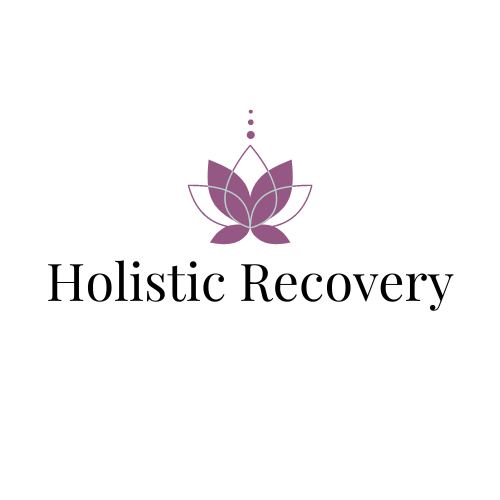
Why Your Drug Of Choice Isn't Random - It's Nervous System Intelligence
One of the most misunderstood aspects of addiction is the idea that people simply “pick” a substance at random. In reality, the drug or behaviour we become attached to often reflects something deeper—something rooted in our nervous system and trauma history.
When we look at addiction through a trauma-informed lens, the picture becomes much clearer. The substance you reach for—your drug of choice—isn’t just about pleasure or habit. It’s often a reflection of how your nervous system has adapted to survive overwhelming emotional experiences.
Understanding this link is not about excusing addiction. It’s about bringing compassion and clarity to what’s often a complex and painful pattern.
The Nervous System and Addiction: A Deeper Look
When we experience trauma—especially developmental trauma that happens in childhood—our nervous system adapts to protect us. These adaptations shape how we relate to stress, emotions, and connection. They also shape what we crave, and what kinds of substances or behaviours we turn to when we’re overwhelmed.
There are three primary nervous system states involved in trauma responses:
Fight/Flight: hyperarousal, anxiety, restlessness, defensiveness
Freeze/Shutdown: numbness, disconnection, depression, collapse
Blended States: combinations of the above, fluctuating between hyperactivity and shutdown
Each of these states can be linked to different forms of substance use, depending on what the person is trying to regulate or escape.
When the Nervous System is in Fight or Flight
If you’re someone who often feels on edge, anxious, reactive, or unable to relax, your nervous system may be operating predominantly in a fight-or-flight state. This means your body is constantly activated, scanning for danger, and rarely able to settle.
In this state, people often turn to substances that help depress or slow down the nervous system. These include:
Alcohol
Opiates (such as heroin, morphine, and codeine)
Cannabis
Benzodiazepines
Opiates in particular are known to create a sense of warmth, safety, and emotional distance. Many people describe the feeling of using them as “like being held,” or “getting a warm hug.” For someone who didn’t receive nurturing care or consistent safety as a child, this sensation can feel profoundly soothing—even if it’s temporary.
Studies have found that a high percentage of individuals with opioid use disorders have histories of childhood trauma. One report from SAMHSA (2014) noted that over 80% of people in treatment for opioid addiction had experienced significant early life trauma. The connection between emotional pain and opiate use is well-established.
When the Nervous System is in Freeze or Shutdown
On the other end of the spectrum, some people experience addiction from a different nervous system state. If you often feel emotionally flat, disconnected from others, withdrawn, depressed, or stuck in hopelessness, your body may be operating in a freeze or shutdown state.
In this state, the drive is not to slow down, but to feel something—to break through the emotional numbness.
People in this state often reach for stimulants that activate the nervous system, such as:
Cocaine
Amphetamines
MDMA (ecstasy)
These substances help generate energy, excitement, or a sense of connection. MDMA in particular creates feelings of emotional closeness and bonding—something that may feel unfamiliar or inaccessible without chemical support. If you grew up feeling emotionally neglected or unseen, this kind of connection can feel incredibly powerful.
Again, the drug is not chosen randomly. It’s responding to an internal need—a nervous system that is stuck in collapse and searching for a way to feel alive.
Blended Nervous System States and Mixed Substance Use
Many
people don’t live in just one nervous system state. It’s common to move between high anxiety and emotional numbness, depending on the day, the situation, or unresolved trauma patterns.
As a result, many people use a combination of substances—perhaps a stimulant to energise, followed by a depressant to come back down. These patterns are not simply about chasing a high; they reflect a system trying to find balance in the only way it knows how.
Understanding this helps move the conversation away from judgment, and toward regulation, care, and healing.
Your Drug of Choice Can Offer Insight
Instead of asking, “Why can’t I stop?” it can be more helpful to ask:
What was my drug of choice doing for me?
What emotional state was it helping me regulate?
What kind of safety, comfort, or connection was I seeking?
And how can I begin to meet those needs in a way that supports—not harms—my my health, relationships and life?
Recovery isn’t just about stopping the behaviour. It’s about understanding it. It’s about recognising the pain that drove it and learning to support the body in a way that brings safety and presence.
The Path Forward: From Coping to Connection
When we stop seeing addiction as a moral failing and start seeing it as a form of nervous system adaptation, everything changes.
This is not about blame. It’s about making sense of something that once felt senseless. It’s about creating space for compassion—for yourself, or for the people you support.
Healing doesn’t happen by force. It happens by helping the body feel safe enough to stop needing what once felt necessary.
And that begins with awareness.




